How Solenoids Work
Solenoids are relays which are commonly used to remotely switch a heavier current. By using a solenoid, the amount of heavy wiring needed to power the load is reduced, since the control circuit mounted inside the cab typically utilizes a smaller wire gauge.
Solenoids are commonly used to control starter and winch motors, and they have many other uses on vehicles of all kinds.
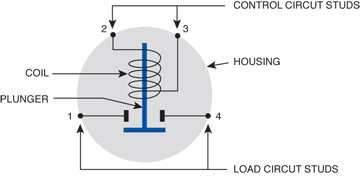
4-stud solenoid diagram
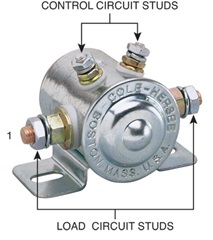
A typical 4-stud solenoid
The diagram shows a magnetic coil surrounding a contact plunger. Before energization, the plunger is not electrically connected to the control circuit. When the control circuit is energized, the electromagnetic force induced in the coil attracts the plunger, which moves to close the load circuit. When the control circuit is de-energized, the spring-loaded plunger returns to its normal state and the load circuit is broken. In continuous duty applications, energization of the coil causes heating, therefore the solenoid housing will become warm even in normal operation.
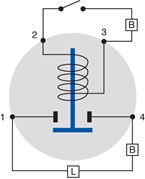
|
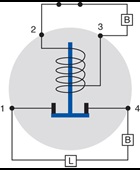
|
|
Solenoid in its normal state
Control circuit and load circuit open
|
Energized solenoid
Control ciruit and load circuit open
|
Latching Solenoid Applications
A Remote Battery Isolator
In a two-battery system, use the Latching Solenoid to isolate the batteries from each other, and prevent battery drain from the higher into the lower. It has an advantage over electronic Battery Isolators (see Battery-Related Products), in that it will not produce a voltage drop during operation.

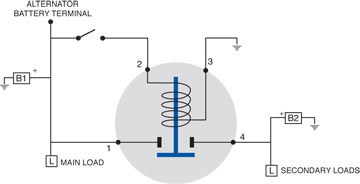
A Remote Battery Disconnect
Use it as a remote Battery Disconnect Switch. This eliminates the need for heavy gauge wiring between the control panel and the battery.
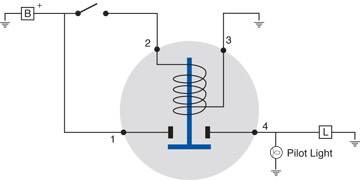
Click here to see our DC solenoids and relays